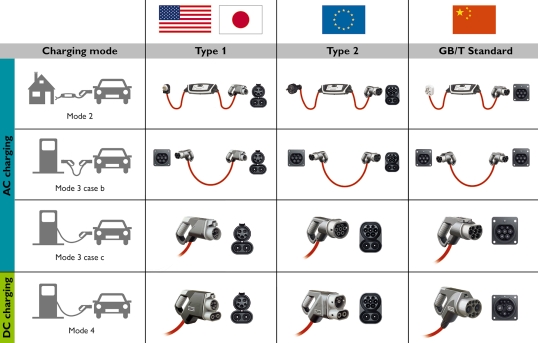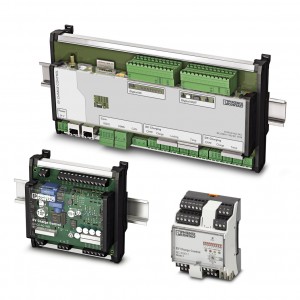Written by Duncan Nicol- Market Segment Manager, Device Connections
Electric vehicles are here to stay.
The definition of an electric vehicle is generally accepted as a vehicle with an electric motor as part of the power unit, and this includes pure electric, hybrids, high performance sports cars and of course formula one’s energy recovery system (ERS). One of the challenges facing the electric vehicle market concerns the charging infrastructure. Range anxiety is still a big factor in the slow take-up of electric vehicles, and so having convenient and universal access to charging stations is a key requirement. At Phoenix Contact we offer an extensive portfolio of charging sockets, cables, controllers and peripheral devices, to aid the implementation of such a charging infrastructure.
To help understand the basics of electric vehicle charging here is a brief guide.
Types of standardised charging connectors:

Type 1:
- Standardised in the USA & Japan.
- AC and DC charging supported.
- Combined AC/DC charging supported.
Type 2:
- Standardised in Europe
- AC and DC charging supported.
- Combined AC/DC charging supported.
GB:
- Standardised in China.
- AC and DC charging supported.
Modes of charging according to the standard:

Mode 1:
- Charging via a standard AC socket outlet.
- Limited to 16A.
- Typically used for domestic charging.
Mode 2:
- Charging via a standard AC socket outlet with in-cable charge controller & RCD.
- Typically used for domestic charging.
Mode 3:
- Charging via a dedicated AC electric vehicle charging socket outlet or tethered charging cable.
- Typically used for domestic or public/private charging using a wall box or charging post.
Mode 4:
- Charging via a dedicated DC electric vehicle tethered charging cable.
- Typically used for public fast charging using a dedicated charging unit.
Mode 3 and 4 charging requires complex control systems to manage the communication between vehicle and charging station to ensure safe and efficient charging. Charge controllers from Phoenix Contact provide the key functions without the need for additional control devices.
To learn more about Phoenix Contact’s solutions for e-mobility, visit our website
For more information, contact Duncan Nicol by email dnicol@phoenixcontact.com or telephone 07799 072059.


Thanks Rachel Boyd for Guide to Electric Vehicle Charging. Your information about modes of charging according to standard really helps.
Great!!! Thanks for sharing this blog. I got really great information about Electric Vehicle Charging. Thanks….
Very informative!!! Thanks for sharing this blog. I got really great information about Electric Vehicle Charging.
Chademo is used in Japan more so than Type1 CCS shown in the image. Apart from that, the diagram is quite useful.
Thanks for sharing your very interesting blog with all of us. An informative blog list you provide how to use or Guide to Electric Vehicle Charging
Great Article!
The bottom line for me is that electric vehicle chargers need to become more affordable for the domestic market; for example, the grants in the UK ending – more big manufacturing players are entering the market that will drive down prices.
This can only be good for homeowners.